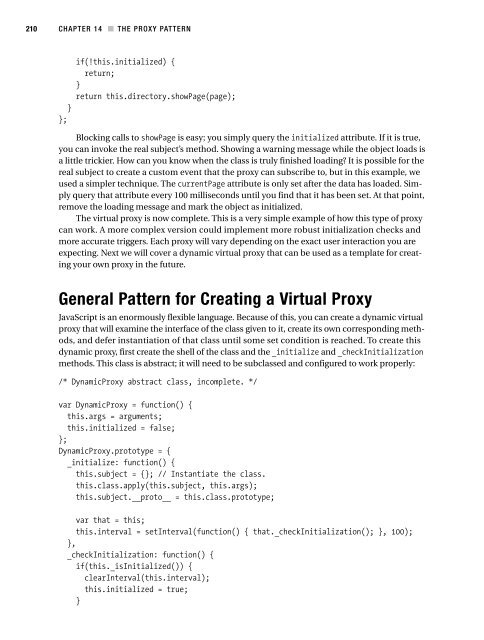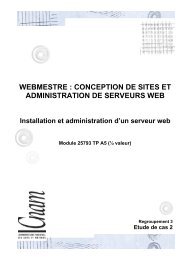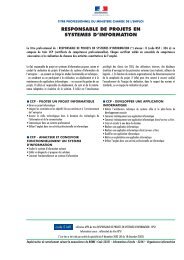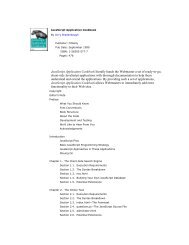Design Patterns
Download - Assembla
Download - Assembla
- No tags were found...
Create successful ePaper yourself
Turn your PDF publications into a flip-book with our unique Google optimized e-Paper software.
210<br />
CHAPTER 14 ■ THE PROXY PATTERN<br />
if(!this.initialized) {<br />
return;<br />
}<br />
return this.directory.showPage(page);<br />
}<br />
};<br />
Blocking calls to showPage is easy; you simply query the initialized attribute. If it is true,<br />
you can invoke the real subject’s method. Showing a warning message while the object loads is<br />
a little trickier. How can you know when the class is truly finished loading? It is possible for the<br />
real subject to create a custom event that the proxy can subscribe to, but in this example, we<br />
used a simpler technique. The currentPage attribute is only set after the data has loaded. Simply<br />
query that attribute every 100 milliseconds until you find that it has been set. At that point,<br />
remove the loading message and mark the object as initialized.<br />
The virtual proxy is now complete. This is a very simple example of how this type of proxy<br />
can work. A more complex version could implement more robust initialization checks and<br />
more accurate triggers. Each proxy will vary depending on the exact user interaction you are<br />
expecting. Next we will cover a dynamic virtual proxy that can be used as a template for creating<br />
your own proxy in the future.<br />
General Pattern for Creating a Virtual Proxy<br />
JavaScript is an enormously flexible language. Because of this, you can create a dynamic virtual<br />
proxy that will examine the interface of the class given to it, create its own corresponding methods,<br />
and defer instantiation of that class until some set condition is reached. To create this<br />
dynamic proxy, first create the shell of the class and the _initialize and _checkInitialization<br />
methods. This class is abstract; it will need to be subclassed and configured to work properly:<br />
/* DynamicProxy abstract class, incomplete. */<br />
var DynamicProxy = function() {<br />
this.args = arguments;<br />
this.initialized = false;<br />
};<br />
DynamicProxy.prototype = {<br />
_initialize: function() {<br />
this.subject = {}; // Instantiate the class.<br />
this.class.apply(this.subject, this.args);<br />
this.subject.__proto__ = this.class.prototype;<br />
var that = this;<br />
this.interval = setInterval(function() { that._checkInitialization(); }, 100);<br />
},<br />
_checkInitialization: function() {<br />
if(this._isInitialized()) {<br />
clearInterval(this.interval);<br />
this.initialized = true;<br />
}











